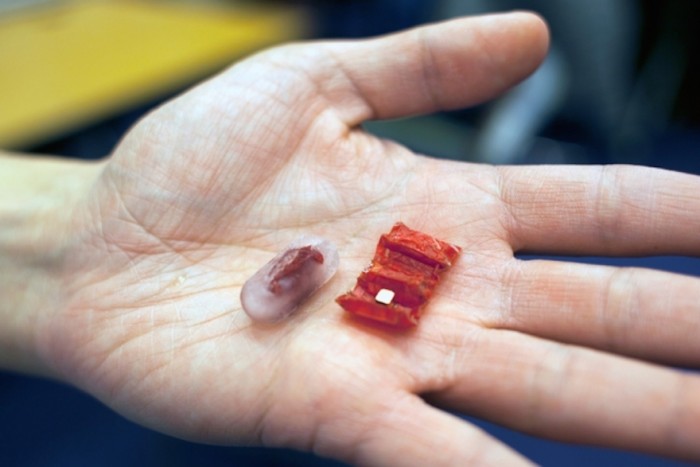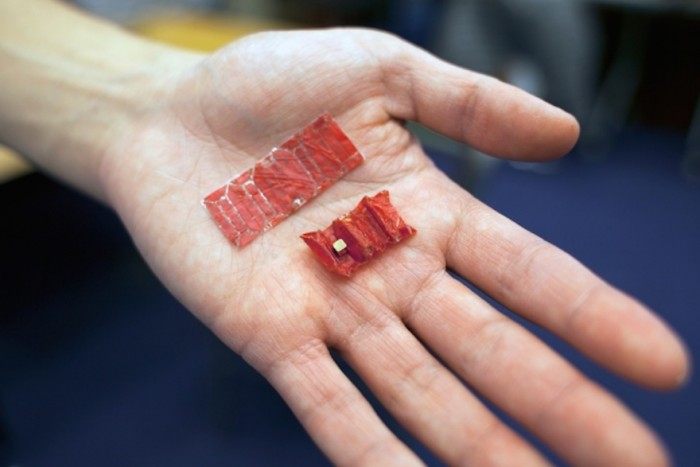Using a simulated stomach, researchers from the Massachusetts Institute of Technology (MIT), the University of Sheffield, and the Tokyo Institute of Technology have shown that an origami robot could complete a number of medical procedures without invasive surgery.
The miniature robot, which fits inside an ingestible capsule, can aid complicated surgeries in the stomach and oesophagus. Once swallowed, the capsule disintegrates and the robot unfolds. The tiny device is controlled by an attached magnet, which responds to an external magnetic field.
MIT’s Professor Daniela Rus spearheads the research alongside researchers Shuhei Miyashita, Steven Guitron, Shuguang Li, Kazuhiro Yoshida and Dana Damian.
Miyashita convinced Rus that the robot could have a number of applications in non-invasive surgery by performing a simulation. “Shuhei bought a piece of ham, and he put the battery on [it]” explains Rus. “Within half an hour, the battery was fully submerged in the ham. So that made me realise that, yes, this is important.”
During a simulation of the human oesophagus and stomach, the robot was able to crawl across the stomach wall to remove a swallowed button battery and patch the wound. Statistics in the USA show that nearly 4000 cases of ingested button batteries are reported. Prolonged contact with the stomach or oesophageal lining can burn the tissue.
“It’s really exciting to see our small origami robots doing something with potentially important applications to health care,” says Rus.
Similar to its predecessors, the robot uses “stick-slip” motion to move. The limbs stick to a surface via friction, and flex to redistribute weight when it wants to move again. It also has two layers of external material protecting the internal material that shrinks when heated. Slits in these outer layers dictate the folding pattern when the internal material contracts.
Unlike the versions that came before, the latest origami robot has strategic slits to make the “stick-slip” motion work with its reduced size. As the robot works in liquid filled organs, it has a fin to propel itself, which accounts for 20 per cent of its movement.
This innovation was presented at the International Conference on Robotics and Automation in early May 2016.









